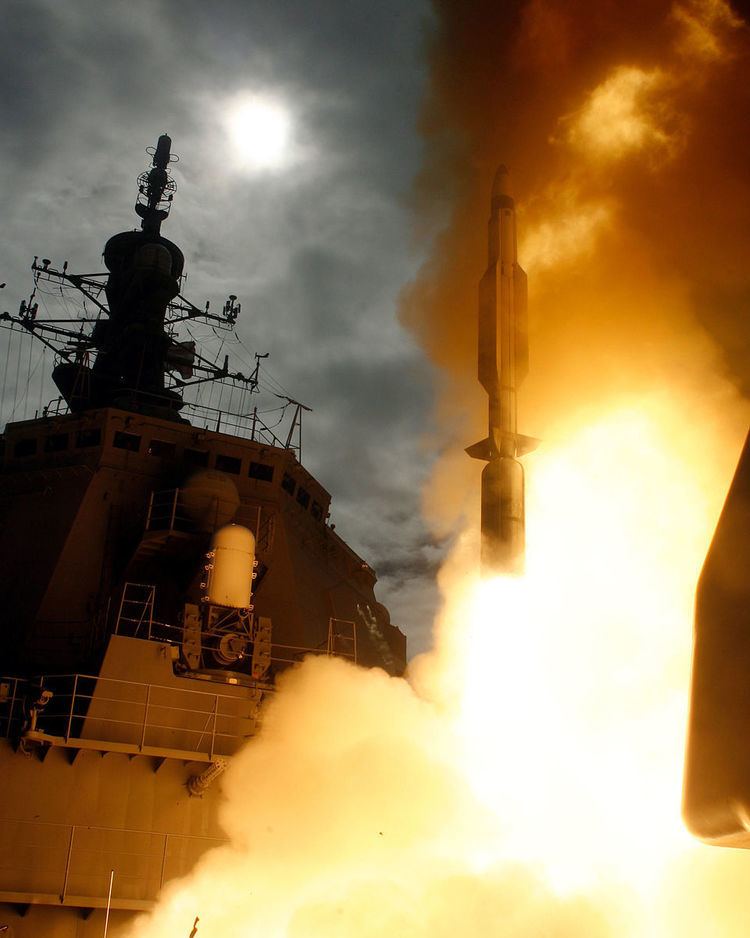 | ||
A guided-missile destroyer is a destroyer designed to launch guided missiles. Many are also equipped to carry out anti-submarine, anti-air, and anti-surface operations. The NATO standard designation for these vessels is DDG. Nations vary in their use of destroyer D designation in their hull pennant numbering, either prefixing or dropping it altogether. The U.S. Navy has adopted the classification DDG in the American hull classification system.
Contents
- Active and planned guided missile destroyers
- Argentine Navy
- Royal Australian Navy
- Royal Canadian Navy
- Peoples Liberation Army Navy of China
- French Navy
- German Navy
- Indian Navy
- Italian Navy
- Japan Maritime Self Defense Force
- Royal Netherlands Navy
- Republic of Korea Navy
- Russian Navy
- Spanish Navy
- Republic of China Navy Taiwan
- Royal Navy
- Royal Norwegian Navy
- United States Navy
- Former guided missile destroyer classes
- References
In addition to the guns, a guided-missile destroyer is usually equipped with two large missile magazines, usually in vertical-launch cells. Some guided-missile destroyers contain powerful radar systems, such as the United States’ Aegis Combat System, and may be adapted for use in an anti-missile or ballistic missile defense role. This is especially true of navies that no longer operate cruisers, as other vessels must be adopted to fill in the gap.
Active and planned guided missile destroyers
Argentine Navy
Royal Australian Navy
Royal Canadian Navy
People's Liberation Army Navy of China
French Navy
Although the French Navy no longer uses the term "destroyer", the largest frigates are assigned pennant numbers with flag superior "D", which designates destroyer.
German Navy
Indian Navy
Delhi-class destroyer
